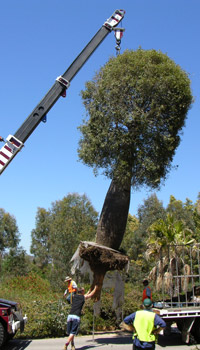Horticulture - Planting
Twice a year in autumn and spring there is a general plant out of several thousand new plants into the open grounds of the Gardens. The amount planted varies from year to year.
The Living Collection curator, in consultation with the Plant Records Unit, will generate lists of plants currently available from the nursery to fill gaps in the outdoor collection.
The list will cover:
- plant clones that are low in number
- threatened species
- plants known to have died
- new cultivars
- new species collected from the wild
- plants for an ecological or horticultural display
- general plants propagated from the collection that are ready for planting.
The glasshouses add to their collection with new plants that include:
- specimens from the wild requiring glasshouse conditions to survive in Canberra
- specimens of orchids, ferns, cycads, ant plants, palms and water lilies purchased from registered collectors
- orchids confiscated by customs.
The nursery builds up stocks for planned displays, like the Sturt's Desert Peas, Everlasting Daisy or Floriade displays. Generally, these displays will be planted separately.
Each section is an evolving horticultural experiment or trial. If a plant dies inexplicably, then a new plant from the same clone could be trialled in a new site. This site might have slightly different soils, microclimate or surrounding plants. Grafting to a more vigorous rootstock is another technique that could be trialled.
The Living Collection includes some advanced feature or show-piece plants. These plants add to the aesthetic appeal and landscaping impact of the collection. At the entrance to the Gardens, is a Bottle Tree (Brachychiton rupestris) that was part of a purchase by the Friends of the ANBG. Alongside the Bottle Tree are several large cycads (Macrozamia moorei) purchased by the Gardens at the same time. Other advanced plants are translocated to the Gardens to prevent their destruction by road works or other development activities.
The collection review currently underway is assessing aspects such as:
- the number of clones kept in the collection
- the threatened species in the collection
- the overall number of species in the collection
- the collection of cultivars
- the existing themes in the Gardens
- ideas for new themes e.g. species or ecosystems vulnerable to climate change.
![Director of National Parks [logo]](../../../images/dnp_90px.gif)






